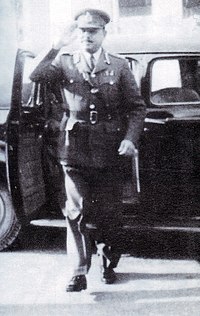History Of ISI Pakistan
After independence in 1947, two new intelligence agencies were created in Pakistan: the Intelligence Bureau (IB) and the Military Intelligence (MI). However, the weak performance of the MI in sharing intelligence between the Army, Naval Intelligence, and Air Force during the Indo-Pakistani War of 1947 also known as first Kashmir War, led to the creation of the Directorate for Inter-Services Intelligence (ISI) in 1948. The ISI was structured to be manned by officers from the three main military services, and to specialize in the collection, analysis, and assessment of external intelligence, either military or non-military.The ISI was the brainchild of Australian-born ex-Indian Army officer, Major General Sir Walter Joseph Cawthorn, then Deputy Chief of Staff a in the Pakistan Army. He selected Colonel Shahid Hamid to set up this new formation and command it. Cawthorn left Pakistan in 1951. Initially, the ISI had no role in the collection of internal intelligence, with the exception of the N.W.F.P and Azad Jammu and Kashmir.The recruitment and expansion of the ISI was managed and undertaken by then-Navy Commander Syed Mohammad Ahsan who was tenuring as Deputy Director of the Naval Intelligence. The Navy's Commander Syed Mohammad Ahsan played a pivotal role in formulating the procedures of the ISI.
Once the Martial Law was promulgated in 1958 all the intelligence agencies came under the direct control of the President and Chief Martial Law Administrator. The maintenance of national Security, which was the principal function of these agencies, came to mean the consolidation of the Ayub regime; any criticism of the regime was seen a threat to national security.The ISI was reorganized in 1966 after intelligence failures in the Indo-Pakistani War of 1965,and expanded in 1969.
The ISI lost its importance during the regime of Zulfiqar Ali Bhutto, who was very critical of its rôle during the 1970 general elections, which triggered off the events leading to the division of Pakistan and emergence of Bangladesh. After Chief of Army StaffGeneral Zia-ul-Haq seized power on 5 July 1977 and became the Chief Martial Law Administrator of the country, the ISI was expanded by making it responsible for the collection of intelligence about the Pakistan Communist Party and various political parties such as the Pakistan Peoples Party (PPP).
The Soviet war in Afghanistan of the 1980s saw the enhancement of the covert action capabilities of the ISI by the Central Intelligence Agency (CIA). A special Afghan Section, the SS Directorate, was created under the command of Brigadier Mohammed Yousaf to oversee the coordination of the war. A number of officers from the ISI's Covert Action Division (Special Activities Division) received training in the United States and many covert action experts of the CIA were attached to the ISI to guide it in its operations against the Soviet troops by using the Afghan Mujahideen.In September 2001, Parvaiz Musharraf appointed a new Director General for ISI, Lieutenant General Ehsanul Haq who was later on replaced by the Lieut. Gen. Shuja Pasha.
Some analysts believe that the ISI provides support to militant groups, though according to other analysts, these allegations remain unsubstantiated with evidence.Under General Javed Nasir's leadership the ISI was involved in supporting Chinese Muslims in Xinjiang Province, rebel Muslim groups in the Philippines, and some religious groups in Central Asia. Nasir also confessed to assisting the besieged Bosnian Muslims despite the UN arms embargo.National Intelligence Directorate (NID) is formed in 2014 in order to pool and share intelligence gathered by over 30 Pakistan's intelligence agencies to combat terrorism in Pakistan effectively



Comments
Post a Comment